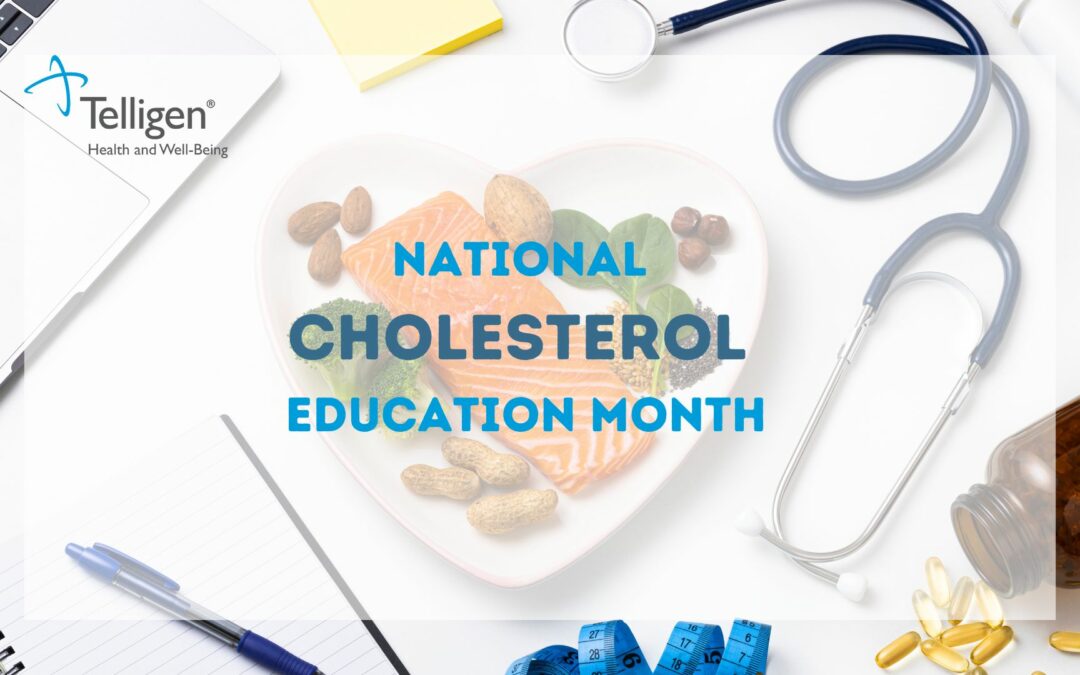September is National Cholesterol Education Month. Cholesterol can be a confusing health topic for a lot of people, but understanding and managing high blood cholesterol is an important step in taking control of heart health. Talk with your family and health care team about high cholesterol and heart health.
According to the Centers for Disease Control and Prevention (CDC), heart disease is the number one leading cause of death in the U.S. More than one million Americans have a heart attack each year and about 500,000 die of heart disease. High blood cholesterol is one of the major risk factors for heart disease, causing heart attack and stroke. Getting your cholesterol levels checked is an important part of staying healthy.
Bad Cholesterol vs Good Cholesterol
Cholesterol travels through the blood on proteins called “lipoproteins.” Two types of lipoproteins
carry cholesterol throughout the body:
-
- LDL (low-density lipoprotein), sometimes called “bad” cholesterol, makes up most of your
body’s cholesterol. High levels of LDL cholesterol raise your risk for heart disease and stroke. - HDL (high-density lipoprotein), or “good” cholesterol, absorbs cholesterol and carries it back
to the liver. The liver then flushes it from the body. High levels of HDL cholesterol can lower
your risk for heart disease and stroke.
- LDL (low-density lipoprotein), sometimes called “bad” cholesterol, makes up most of your
When your body has too much LDL cholesterol, the LDL cholesterol can build up on the walls of
your blood vessels. This buildup is called “plaque.” As your blood vessels build up plaque over
time, the insides of the vessels narrow. This narrowing blocks blood flow to and from your heart
and other organs. When blood flow to the heart is blocked, it can cause angina (chest pain) or a
heart attack.
5 Tips to Prevent High Cholesterol
- Make healthy eating choices. Eating lots of foods high in saturated fat and trans fat may contribute to high cholesterol and related conditions, such as heart disease.
- What you can do:
- Limit foods high in saturated fat. Foods that are higher in saturated fat may be high in cholesterol.
- Choose foods that are low in saturated fat, trans fat, sodium (salt), and added sugars.
- Eat foods naturally high in fiber. These foods may help prevent and manage high levels of low-density lipoprotein (LDL, or “bad”) cholesterol and triglycerides while increasing high-density lipoprotein (HDL, or “good”) cholesterol levels.
- What you can do:
- Maintain a Healthy Weight. Obesity raises levels of LDL (“bad”) cholesterol. Excess body fat affects how your body uses cholesterol and slows down your body’s ability to remove LDL cholesterol from your blood. The combination raises your risk of heart disease and stroke.
- What you can do:
- Talk to your doctor about what a healthy weight is for you.
- Work with your doctor on a food and fitness plan to help you reach or maintain a healthy weight.
- What you can do:
- Get Regular Physical Activity. Physical activity can help you maintain a healthy weight and lower your cholesterol and blood pressure levels.
- What Can You Do:
- Get active as a family. For adults, the Surgeon General recommends 2 hours and 30 minutes of moderate-intensity exercise, such as brisk walking or bicycling, every week. Children and adolescents should get 1 hour of physical activity every day.
- Make physical activity a part of each day. Take the stairs instead of the elevator, park a little farther away, walk to the store, or do jumping jacks during commercials.
- What Can You Do:
- Quit Smoking. Smoking damages your blood vessels, speeds up the hardening of the arteries, and greatly increases your risk for heart disease. If you do smoke, quitting will lower your risk for heart disease.
- What Can You Do:
- Talk to your doctor about ways to help you quit.
- Work with a health coach on a Smoking Cessation program.
- What Can You Do:
- Limit Alcohol. Too much alcohol can raise cholesterol levels and the levels of triglycerides, a type of fat in the blood.
- What You Can Do:
- Avoid drinking too much alcohol. Men should have no more than two drinks per day, and women should have no more than one.
- What You Can Do:
Help Your Members Lower Their Risk
Telligen’s At-Risk program consists of a collaborative process between you and your health coach. Your health coach will empower you to start and maintain healthy habits through education and real-time support. Together, you will create a custom action plan to guide you as you take this important step for better health.

